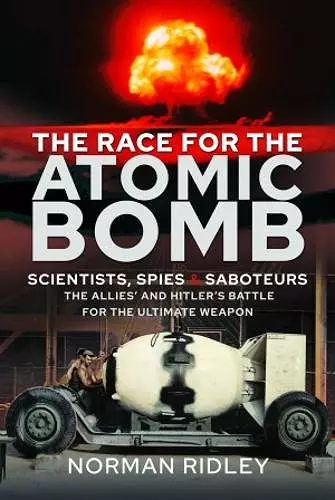The Race for the Atomic Bomb
Scientists, Spies and Saboteurs - The Allies' and Hitler's Battle for the Ultimate Weapon
Format:Hardback
Publisher:Pen & Sword Books Ltd
Published:13th Mar '23
Should be back in stock very soon

On 19 December 1938, Otto Hahn, working at the Kaiser Wilhelm Institute for Chemistry in Berlin, conducted an experiment the results of which baffled him. It took his migr collaborator Lise Meitner to explain that he had split an atom of uranium, which at the time seemed to defy all known laws of physics. When Neils Bohr took this news to the United States it became clear to scientists there that these results opened a completely new and, for some, horrifying possibility of energy production that could be used for both peaceful and military purposes. Scientists in Germany, France, Britain and the US began to delve deeper into the implications. But it was the British government that was the first to explicitly describe how the splitting of the atom might be utilised to create a practical weapon of fearsome power. France, by then, had been occupied by the Germans and most of their nuclear scientists had fled to Britain. For their part, the Germans, who for a time were at the very forefront of nuclear research, had weakened their own scientific ranks by hounding many of their best scientists who had fled persecution under the draconian Nazi racial laws. They still retained, however, possibly the ablest nuclear scientist of them all in Werner Heisenberg who set about developing his own programme for nuclear power. British scientists made extensive progress before realising that translating their laboratory results into the vast industrial enterprise required to build a bomb was way beyond the nation's stretched resources. The government agreed to hand over all the UK's research findings to America in return for a share of the spoils. The United States, for its part, was impressed with British results and invested enormous sums of money and resources into what became known as the Manhattan Project in a concerted effort to build a bomb before the end of the war. For much of the war the Soviets showed little enthusiasm for the sort of investment required to build their own bomb. However, with an eye to the future they established an extensive espionage network both in Britain and America. Following the German surrender there was still the problem of Japan, and the race continued to develop a working bomb to...
ISBN: 9781399040327
Dimensions: unknown
Weight: unknown
320 pages